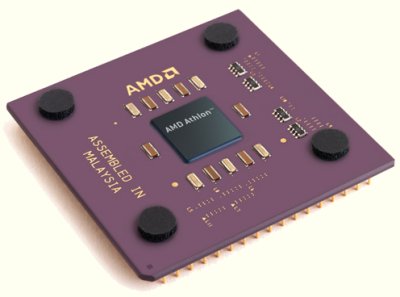The First Palomino: AMD Releases Mobile Athlon 4
The Technology Behind 'Athlon 4'
There has been a lot of discussion about AMD's upcoming 'Palomino'-core in the past months. The only information concerning the 'Athlon 4' design was that it would basically provide a mere reduction of power consumption and thus heat production. Obviously the expectations for improved performance of 'Palomino' were rather low. Today AMD finally lifted the curtain and revealed a much more attractive picture of the new 'Athlon 4' processor. While 'Palomino' won't be able to leave 'Thunderbird' too far behind, it certainly comes with a significant enough performance edge over its predecessor. Let's have a look at all the new features of 'Athlon 4'.
20% Less Power Requirement And Heat Production
Athlon 4's die is now pretty much square and therefore of significantly different shape compared to the previous 'Thunderbird' Athlon processors. This alone shows that Athlon 4 is a complete redesign. The number of transistors was increased by half a million, from 37 million of Thunderbird to 37.5 million of Palomino. The surface area of Palomino's die is with 128 mm2 only little larger than the 120mm2 of Thunderbird. The new chip design was able to reduce the power hunger of Athlon by 20% with the logical effect of a significant reduction of heat generationas well. While desktop and workstation Palominos will probably run at a core voltage of only 1.5 V, the voltage requirement of the today released Mobile Athlon 4 will be even less. We will discuss this in more detail further down in the article.
Get Tom's Hardware's best news and in-depth reviews, straight to your inbox.
Current page: The Technology Behind 'Athlon 4'
Prev Page Why Athlon 4? Next Page SSE For Athlon 4 - 3DNow! Professional